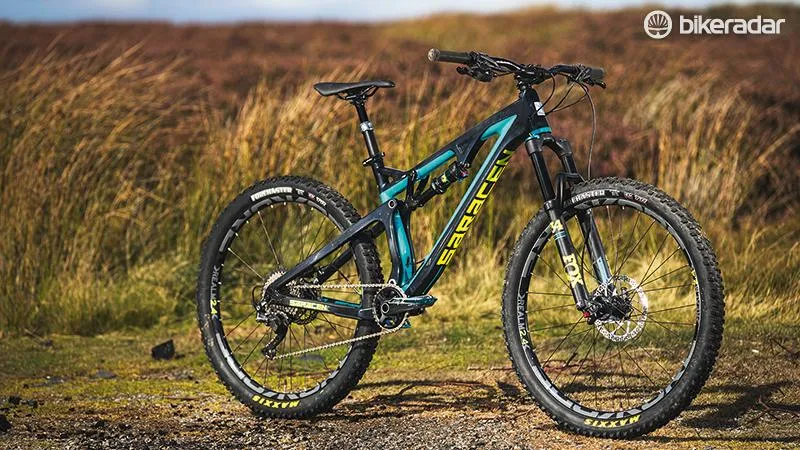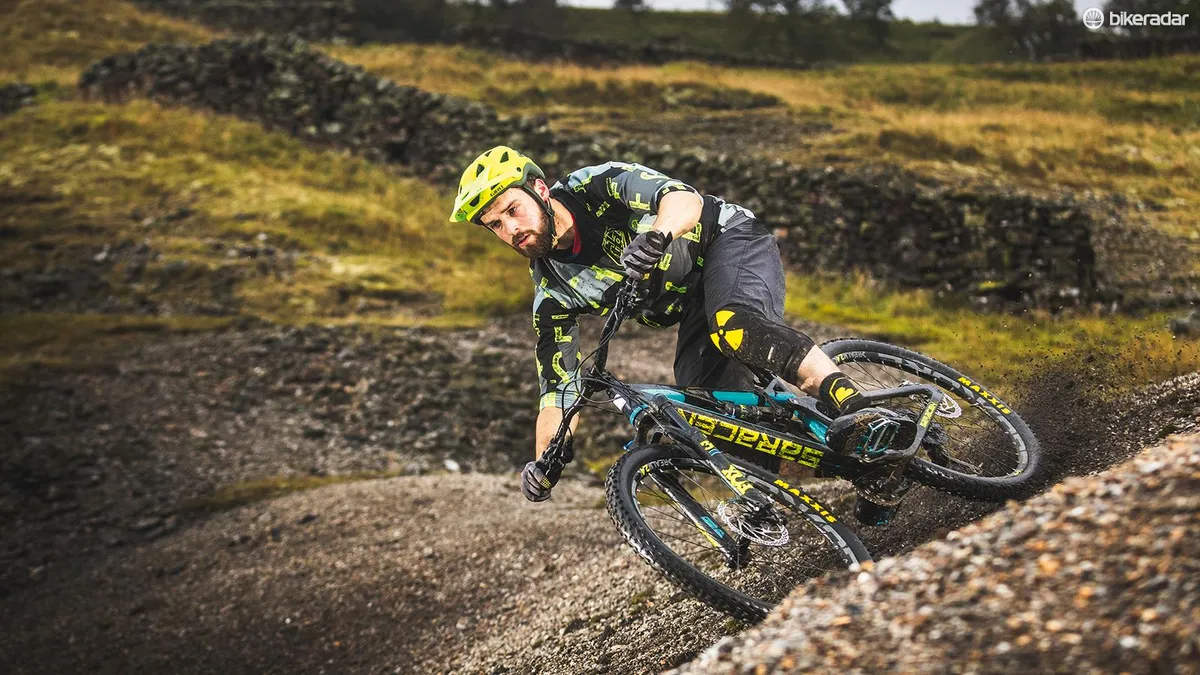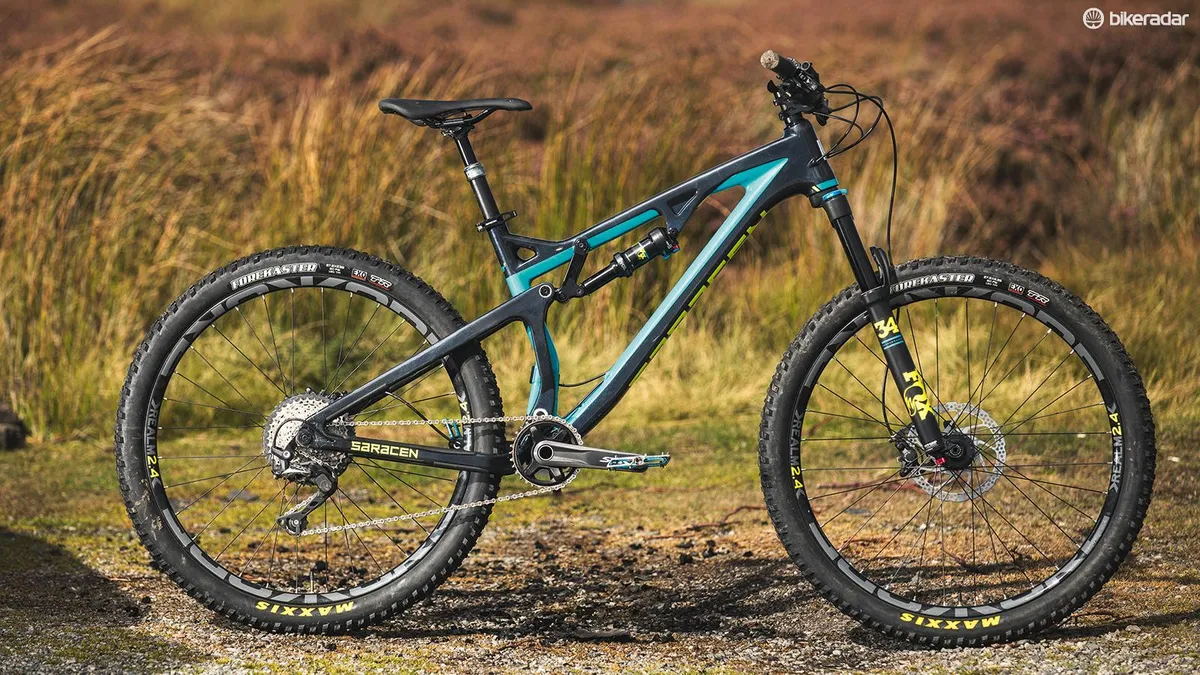Saracen’s Kili Flyer Elite is light and well-shaped for fast and far riding all year round, but its sticky suspension and frame flex are obvious in technical sections.
The full-carbon frame’s layout hasn’t changed for 2018 but Saracen has modified the mould to let it stretch the front end. That means the medium is as long as last year’s large.
The back end is now Boost width, with a bolted axle and direct-mount mech for stiffer shifting and tracking, and the head angle is a degree slacker. Saracen has also specced a lighter compression tune on the shock.
The 30mm main pivot, ISCG-05 tabs and optional front mech mount stay the same. There’s a lot of stiction in the linkage bushings, which makes swingarm movement notchy even with the shock removed.

Saracen Kili Flyer Elite kit
While its price has dropped by £200, the Elite’s spec is now closer to that of last year’s cheaper Pro model. That means you get a ‘Performance’ grade Fox fork and shock, not Kashima-coated units, and a 1x11 Shimano SLX transmission without last year’s XT mech and shifter hop-ups.
While my sample had SLX brakes, production bikes will get Deore, but that’s no bad thing, because they have a more consistent lever action. Beware of the ‘recommended’ pressures on the fork, which are 25 to 30psi lower than I’d run and make it dangerously divey.
The mid-width Kore rims are sound and the Maxxis Forekaster tyres are a definite control upgrade.
Saracen Kili Flyer Elite ride impressions
Compared to last year’s Kili Flyer, the change in frame geometry is immediately and positively obvious. With 25mm more reach, even my medium sample (no larges were available for test) felt roomy and rad enough with its front wheel placement.
The slightly slacker head angle puts it into the ‘trail’ category in steering terms too, while the wide bar and short stem give plenty of leverage and fast traction-tweaking reactions for technical situations.

Despite the longer frame, lighter tyres mean it weighs fractionally less than last year. The tight initial feel of the Performance fork, stiff linkage bushings and shock stops pedalling bounce, improves acceleration and makes the Kili a genuine Flyer on smoother trails and climbs. That means it’s potentially a good option for riders coming off more traditional XC/trail bikes who are looking for modern geometry but don’t want to sacrifice low weight and efficient pedalling.
It also creates a clear difference in intent and feel between the Kili Flyer and the 165mm-travel Saracen Ariel. Shimano’s durable SLX kit is a good match when it comes to long-range missions in all weathers too.
Despite the refreshed geometry, stouter fork, toothier tyres and enduro-style cockpit, the Kili lacks descending confidence compared to the other bikes on test.
Perhaps unsurprisingly, the lightweight mainframe isn’t as stiff some of the other bikes I had on test such as the Specialized Stumpjumper FSR Comp Carbon 650b and Cannondale Trigger 3 when tracking across trouble or under power.
This gives a distinctly articulated front-to-rear frame feel. While the big bar generally keeps the front end on track, the rear often skips and crabs in different directions when you’re trying to roll through rocks and roots, and can ricochet randomly on bigger landings.
While the toothy Forekaster tyres are theoretically well suited to slippery UK natural trails, the tight shock/fork feel that helps the Kili spark up under power kills supple traction over roots and smaller rocks.
The altered compression damping means it’s easier to get into the mid stroke for a smoother ride over bigger stuff and there’s still a lot of tyre-preserving end-of-stroke progression, but you need to tune pressure carefully to make it feel more like a 130mm bike than nearer 100/110mm. As a result, you need to Fly the Kili with some skill/grip/nerve in reserve, ready to catch probable twists or slips, rather than just mashing the pedals and hacking and carving off down the trail.

